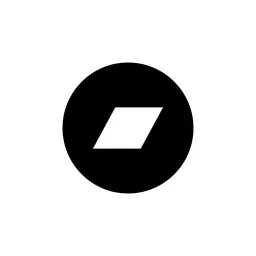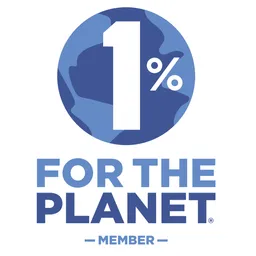In today’s guest post, we’re delighted to talk to Olivia Artz of Olivia Artz Modular about her newest product, the Teletouch, her philosophy on synthesis and design, and a whole lot more.
Thanks so much for chatting with us! Can you tell us all a bit about who you are and what you do?
Thank you for having me! You have a truly lovely home. *points at objects* Those are just great! Where did you get them? I’m Olivia Artz and I’m working with a network of neuroqueer artists, inventors, and coders to get our gay-ass dreams out into the world.
How did you get started in music and what led you to the world of synths?
I was a video performance artist who wrote and sold VJ software in the early 2000s.
Eurorack is bigger than music. Modular is an incredibly rich area for exploration. It’s the most cyberpunk thing ever, so of course it resonates. It’s a mid 90s platform for electronic art where anything can talk to anything (generating a mass of cables). A dozen computers (some analog some digital) from around the world, working together to just tear up some sound. It’s fundamentally joyous. And while eurorack has mostly been used for music and video, it has so much potential for visual art, bench equipment, gaming systems, lighting design, and storytelling.
How did Olivia Artz Modular get its start?
I was just a lonely synth girl with a Mother-32 and a reverb pedal until Stargirl invited me into a queer synth community. Within this community I noticed other people that have, like, too many ideas. Really good ideas. Original concepts for sequencers, new kinds of voices, circuit designs, you name it. But we all struggled to get them done. We’re mostly neurodivergent and broke so I created a space where we could lean on each other for resources, skills, time, patience, and understanding. Together we’re fucking unstoppable.
Much love to your Kris Kaiser for reaching out to us while the Legio platform was under development. She gave OAM a chance to help integrate Legio into the DaisySP open-source library. Our Eris Fairbanks took care of that and wrote this incredible example firmware. It’s only 100 lines of code and sounds… sounds like this…
Your newest product, Teletouch, is absolutely gorgeous. What can you tell us about it?
Well first off, it’s not my invention or design. Non Verbal Poetry dreamed up, prototyped and designed this Teletouch on their own on their tiny desk, in their boat. They’re a brilliant electronic folk-musician and inventor that I feel honored to be collaborating with.
I saw Non Verbal Poetry work out the first prototypes on a trans synth server and I thought it seemed interesting, but it wasn’t until I saw the tree design that I knew we wanted to be involved. It has this rare quality of being both an ethereal work of art and a flexible, versatile controller. We talked and I started helping pay for later prototypes and we worked out an agreement for OAM to manufacture and distribute Teletouches.

Touchplate interfaces are too expensive for most people. Non Verbal Poetry designed one that we can sell for half as much as others on the market. Less if you assemble it yourself. We all wanted this to exist so I reached out to Non Verbal Poetry about helping pay for production before I fully understood how it worked. It was a scramble to source parts, find money for PCBs, and figure out assembly.
How can the Teletouch fit into a musician’s workflow?
If you use Monome Teletype, it’s easy to integrate into your scripts. It has two gate outputs that can trigger Teletype when you touch on up to two pads at a time. Everything else is sent over i2c. If you speak Teletype, this is all you need to get started:
EVERY 2: BREAK
TR.P 1
CV 1 N IIQ 1
If you don’t speak Teletype and that looks like nothing to you, it’s a MIDI device that sends notes, pressure info, and controller data. So it’s easy for nearly any MIDI-capable program to work directly with note information or go into learn mode to assign the knobs or sliders.
One of the things we love about Teletouch is how gestural and expressive it is. It’s hard to really capture how enjoyable it is to interact with the pressure-sensitive capacitance without actually getting your hands on one.
You describe your products as “art-objects” (and I can see why, they’re absolutely beautiful). Do your designs start with a function, an artistic design, or something else?
They’re art objects because we’re interested in letting each idea have the space to do what it needs. This matters more to us than developing a shared system or having aesthetic continuity. We don’t mind instruments being rough around the edges, so long as they express something meaningful.
In the case of Teletouch, we have a music easel made for a witch. Because it was designed by a witch. Going forward, we also expect to have art objects that aren’t necessarily modular or eurorack related, but still express things that are meaningful to us. Zines, sound recordings, whatever we feel moved to make.
What’s next for Olivia Artz Modular?
A lot. Uncertainty, Logic, and Seaglass are a few modules that are in later stages of development. Uncertainty is a 1-CV-in/8-gate-out computer in 2 HP. Logic is what you think it is, but it uses simple language to describe logical operations. No XOR or NOR or inscrutable math symbols, though those operations are easy to set up.

Prototypes of Seaglass, Uncertainy, and Logic
Seaglass is how you get your sound ready for effects processing. A triple-VCA mixer into a low pass and a high pass filter; it can make a startling difference in your effects chain. And it has a pedal output. Seaglass is also the first time—to our knowledge—that a module has attributed to a plural system. The Prins designed this module and OAM is extremely excited to get it out. I mean, it’s an excuse to buy more pedals.
Where can people find you?
You can purchase Teletouch as an assembled unit, a kit, or just a set of PCBs on our shop page at oamodular.org; that’s also where you’ll find new products as soon as they’re available. Our Instagram and Twitter feeds are a good source of info on what we’re up to lately, but if you want to get a bit more of a behind-the scenes look at what we’re working on, you can also join our Discord community.






